You’ve likely gazed up at the night sky, marveling at its vast beauty, but have you ever stopped to ponder the fundamental difference between a star and a galaxy?
This question might seem simple, yet it’s a common source of confusion. The sky is filled with countless points of light, and without a clear explanation, understanding what sets stars apart from galaxies can be daunting.
In this article, I guide you through the distinction between stars and galaxies. You’ll learn about their unique characteristics, composition, and the roles they play in the cosmos. Get ready to enhance your astronomical knowledge and view the night sky with a newfound clarity.
Key Things to Know
- Stars are immense balls of burning gas, producing light and heat, like our sun.
- Galaxies are vast collections of stars, gas, dust, and dark matter bound by gravity.
- Stars form from nebulae undergoing nuclear fusion; galaxies form from matter clumps post-Big Bang.
- Understanding stars and galaxies enhances our grasp of the universe’s vastness.
Recommended For You
The Fundamental Difference Between a Star and a Galaxy
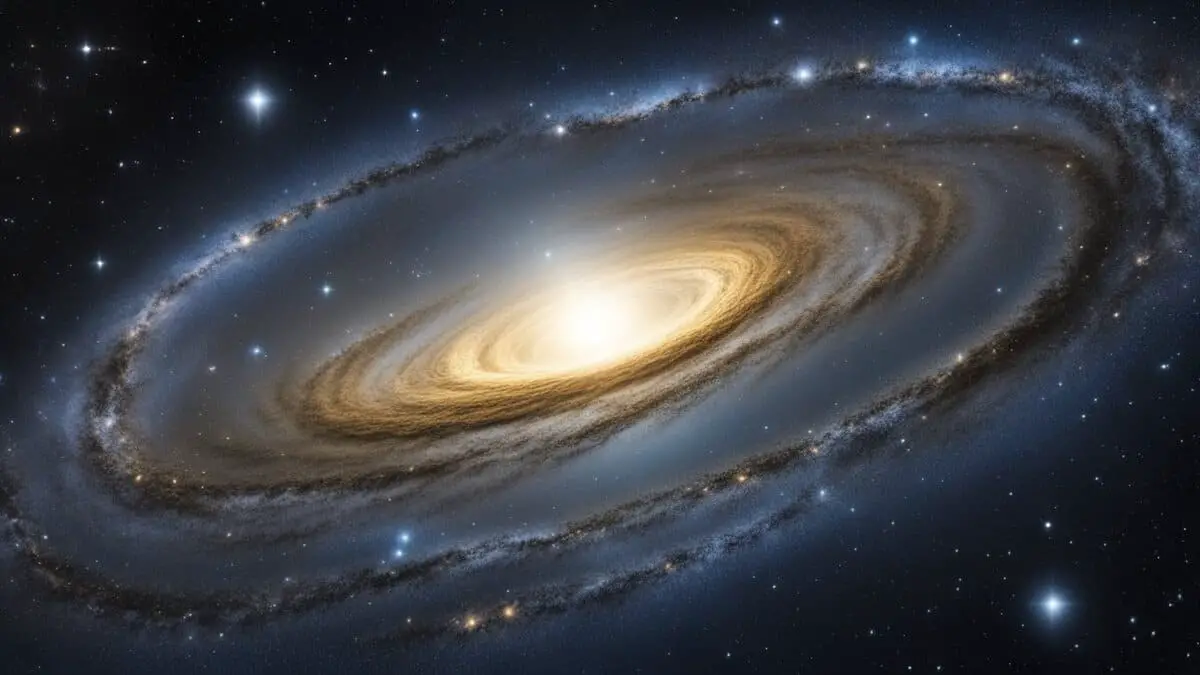
I’ve spent countless nights observing the sky and learned that stars and galaxies are quite different.
Each holds its traits that set them apart in the vast universe.
Definition and Basic Characteristics
Stars are the sparkling dots that light up the night sky. These sparkling dots have revealed a universe of stories in my telescopic observations. They’re vast balls of burning gas that produce their light and heat.
Our sun is a classic example of a star.
Main characteristics of a star:
- Produces light and heat
- Made mostly of hydrogen and helium
- Can live for billions of years
Galaxies, on the other hand, are massive collections of stars, gas, dust, and dark matter bound together by gravity. They’re like cities, with stars as buildings packed into different neighborhoods.
The Milky Way is the galaxy that you call home.
Basic attributes of a galaxy:
- Contains billions of stars
- Includes gas, dust, and other elements
- Usually has a supermassive black hole at its center
Composition and Structure
When you look at what stars and galaxies are made of, you’ll see that stars are simpler. Fusion turns hydrogen into helium inside a star like our sun, releasing energy.
Witnessing a solar eclipse firsthand, I’ve felt the power of our sun, a typical star undergoing nuclear fusion.
The inside of a star:
- Core: Where fusion happens, making energy
- Outer layers: Gas that’s cooler than the core
Galaxies are intricate and much bigger. They’re not just a single object but a whole system with various parts working together.
My first successful photograph of the Andromeda Galaxy underscored just how intricate and vast galaxies are:

Elements of a galaxy’s structure:
- Stars with their planets and moons
- Nebulae: Clouds of gas and dust where new stars form
- Dark matter: Something we can’t see but know is there because of gravity
Understanding these parts, you now know stars and galaxies are fundamentally different, but both are essential pieces of the cosmic puzzle. You can think of stars as individual beings and galaxies as large communities where these beings live.
FREE STARGAZING CHECKLIST
My 5-page Stargazing Checklist will enhance your astronomical observations.
Follow this free checklist to navigate the night sky with confidence, clarity, and a sense of preparedness for a rewarding stargazing experience.

Formation and Evolution of Stars and Galaxies
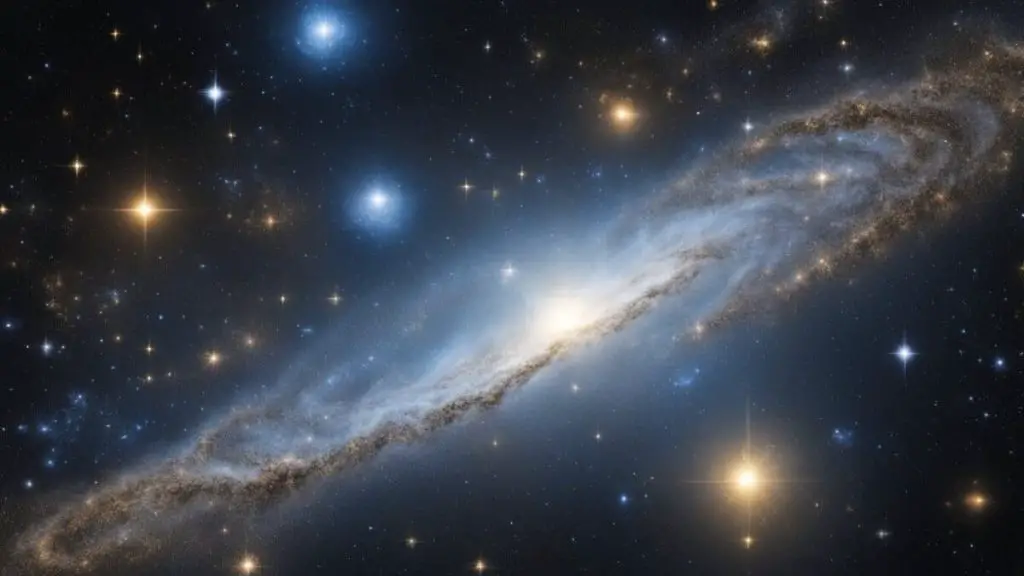
In this section, you’ll learn how stars and galaxies come into being and change over time. We’ll talk about their steps from birth to their eventual end.
Stellar Formation
Stars begin their lives in nebulae, which are great clouds of gas and dust. Capturing the birthplace of stars in nebulae with my camera has been one of my most rewarding experiences as an astrophotographer. These clouds all start with a little nudge, usually from a nearby cosmic event, leading to:
- Collapse: The cloud’s gravity pulls it inward.
- Nuclear Fusion: As the cloud collapses, its core gets super hot and dense, triggering the start of a star where hydrogen atoms fuse into helium.
Galaxy Formation
Galaxies, which are prominent families of stars, take shape in a few stages:
- After the Big Bang, matter spread out and formed clumps. Delving into the origins of galaxies has always fascinated me, offering a cosmic perspective on the aftermath of the Big Bang.
- These clumps, drawn together by gravity, created vast clusters of galaxies.
- Over time, some galaxies developed supermassive black holes at their centers, pulling in more matter and growing in size.
Lifecycle of Stars and Galaxies
Stars and galaxies have lifetimes that can span billions of years, but here’s what happens during that time:
- Stars: They transform elements in their cores and can end their lives as white dwarfs, neutron stars, or even dramatic supernovae.
- Galaxies: They merge and sometimes collide, driven by the gravity of their massive black holes, continuously reshaping the universe’s structure.
Scale and Measurement of Stars and Galaxies
Understanding the size and distance of stars and galaxies helps you grasp the vastness of space. It’s like comparing a single sand grain to an entire beach.
Size Comparison
Like our Sun, stars are enormous balls of gas, but they’re tiny compared to galaxies. The Milky Way, for example, is our home galaxy and is massive.
In size comparison:
- Individual stars Can be thousands of times larger than Earth.
- Milky Way: Contains billions of these stars and spans about 100,000 light-years across.
Andromeda, our galactic neighbor, is even bigger than the Milky Way!
Distance and Measurement Techniques
Measuring the distance between stars and galaxies is tricky, but astronomers have tools for this job.
Some techniques include:
- Parallax: Used for stars closer to Earth.
- Standard candles: Like certain types of stars whose actual brightness we understand.
- Redshift: Tells how fast a galaxy moves away, helping gauge distance.
Hubble Space Telescope and James Webb Space Telescope are like cosmic measuring tapes, revealing the distance of far-off galaxies by capturing their light.
By understanding the scale and how to measure it, you’re now one step closer to comprehending the grand design of our universe.
Gravitational Influence
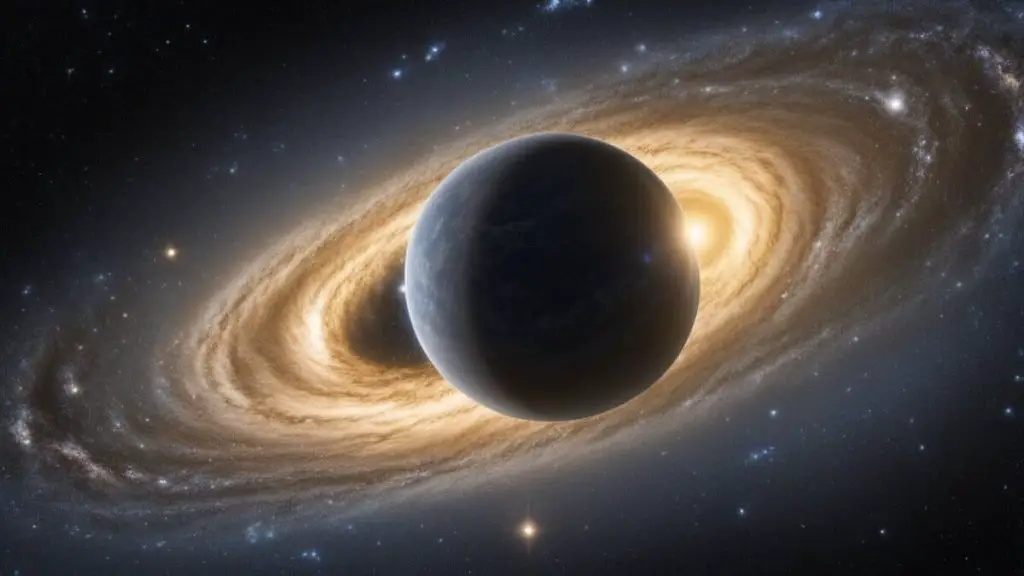
Gravitational forces are the invisible hands that shape the cosmos. They keep planets in orbit and hold galaxies together. Let’s look at how gravity works in the context of stars and galaxies.
Star Systems and Planetary Orbits
Our solar system is a star system, a bunch of planets, and other space stuff that orbit a star—like the sun. A planet’s orbit is the path it follows around a star. Gravity is the force that keeps planets like Earth from flying off into space.
- Planets stay in their orbits because of the sun’s gravity pulling on them.
- The closer a planet is to the sun, the stronger the sun’s gravitational pull on it.
Galactic Rotation and Dark Matter
When you look up at the night sky and see a galaxy, you see a massive space city with billions of stars. Unlike individual star systems, galaxies spin around a center point. But there’s a twist: they rotate, so scientists think there must be some unseen matter—called dark matter—adding to the gravity that holds them together.
- Dark matter doesn’t give off light or energy. So, you can’t see it, but it has a strong gravitational pull. Hearing a lecture on dark matter, I was captivated by the invisible forces shaping our universe.
- This extra gravity helps explain why galaxies spin faster than they would if only the stars we see were pulling on them.
Remember, gravity is key whether you’re looking at the paths of planets or a galaxy’s spin. It’s all about the gravitational influence!
Observation and Exploration
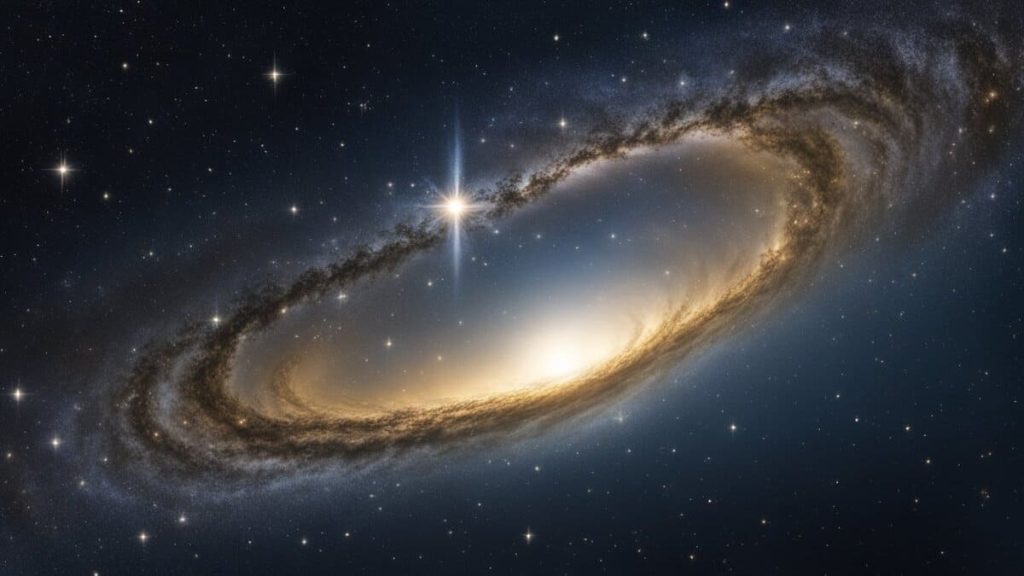
You need the right tools and a clear night sky to understand the cosmic dance. Now, let’s dive into how you can spot the differences between stars and galaxies from your backyard.
Telescopic Technology
Telescopes are your window to the universe. Here’s what you need to know about them:
Size Matters
- The larger the telescope mirror, the more light it gathers. More light means seeing fainter objects in the night sky.
- Clarity is Key: A good telescope can resolve fine details. This helps astronomers tell star clusters from galaxies.
Remember these points to get a clearer view when you’re using a telescope.
Significant Discoveries in Astronomy
Exciting things have been spotted up there thanks to telescopes:
- NASA has found galaxies with trillions of stars.
- Astronomers have identified different types of galaxies by their shape.
By turning your gaze upwards, you’re following in the footsteps of observatories and explorers worldwide. Stay curious and keep observing.
Classification and Types of Stars and Galaxies
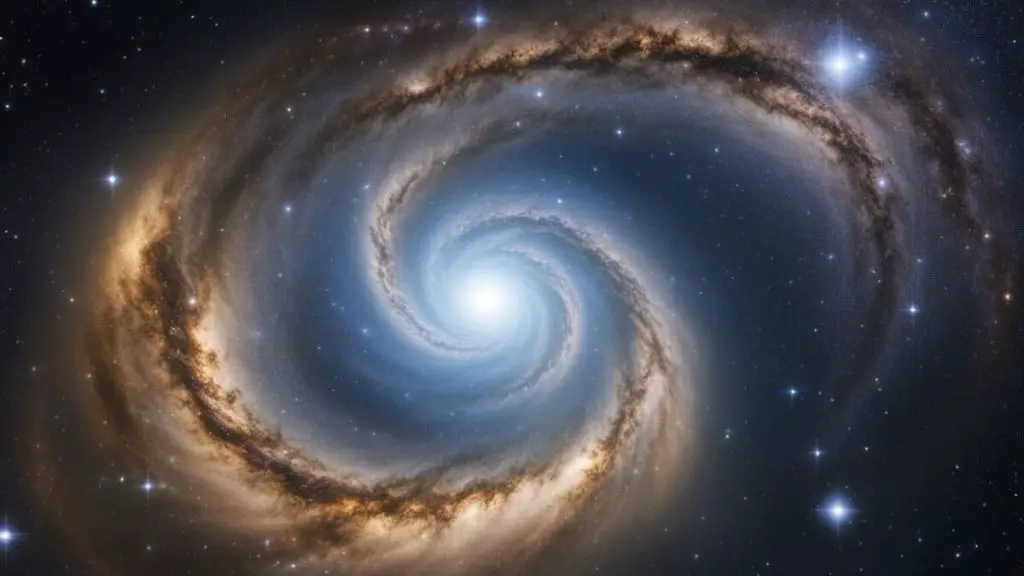
Looking up at night, you see a mix of individual stars and distant galaxies. You must understand how stars and galaxies differ in types and classifications.
Types of Stars
Stars come in many sizes and colors, each telling a story of its life cycle and mass.
Here’s a quick run-down:
- Red Dwarfs: These small, cool stars burn their fuel very slowly. They’re the most common type in the universe.
- Red Giants: After a star uses up hydrogen in its core, it expands into a red giant. Our Sun will become one in about 5 billion years.
- White Dwarfs: What’s left after a red giant loses its outer layers. It’s super hot but will cool over time.
- Neutron Stars: These form when massive stars explode in supernovae, leaving behind incredibly dense cores.
- Brown Dwarfs: Sometimes called “failed stars,” these don’t have enough mass to start nuclear fusion.
For a more detailed look into star types based on their spectral characteristics, exploring Stellar classification might help!
Galaxy Morphology
Galaxies are like star cities, each with millions or billions of stars!
They come in a few main shapes:
- Spirals: These have a flat rotating disk of stars and dust, with arms winding out from a central bulge. The Milky Way is a spiral!
- Elliptical Galaxies: These are more 3D, range from nearly spherical to stretched out, and don’t have the disks spirals do.
- Irregular Galaxies: They lack a regular shape, often because of gravitational interactions with other galaxies.
- Dwarf Galaxies: Smaller than the others, these can still have many stars. They’re often found orbiting larger galaxies.
Galaxies can also be active if they have a supermassive black hole at the center, pulling in lots of matter and shining brightly.
Frequently Asked Questions
How do stars get their colors?
Stars appear in different colors due to their temperatures. Blue stars are the hottest, burning at the highest temperatures, while red stars are cooler. Our Sun, a yellow star, has a moderate temperature, influencing its color.
Can we see other galaxies with the naked eye?
Yes, under dark, clear skies away from light pollution, you can see a few other galaxies with the naked eye. The Andromeda Galaxy is the most notable example, visible as a faint, blurry spot.
What happens when galaxies collide?
When galaxies collide, it’s a slow process that takes millions of years. Stars within them rarely crash into each other due to vast distances apart. Instead, galaxies merge, rearranging stars, gas, and dust, often sparking new star formation.
TL;DR
- Stars are massive balls of gas emitting light and heat, while galaxies are vast collections of stars, gas, and dark matter.
- Stars form within nebulae through nuclear fusion, whereas galaxies form from matter clumps post-Big Bang.
- The lifecycle of stars and galaxies involves complex transformations, including the formation of supernovae and black holes.
- Observational tools like telescopes allow us to measure the immense distances and sizes of stars and galaxies.
- Gravitational forces play a crucial role in shaping stars’ and galaxies’ structure and behavior.
Your curiosity fuels our journey through the cosmos! While I’ve shared insights from my stargazing adventures and studies, there’s always more to discover together.
If you have questions or thoughts, let’s start a conversation below. I’m here to offer my perspective and learn alongside you.



